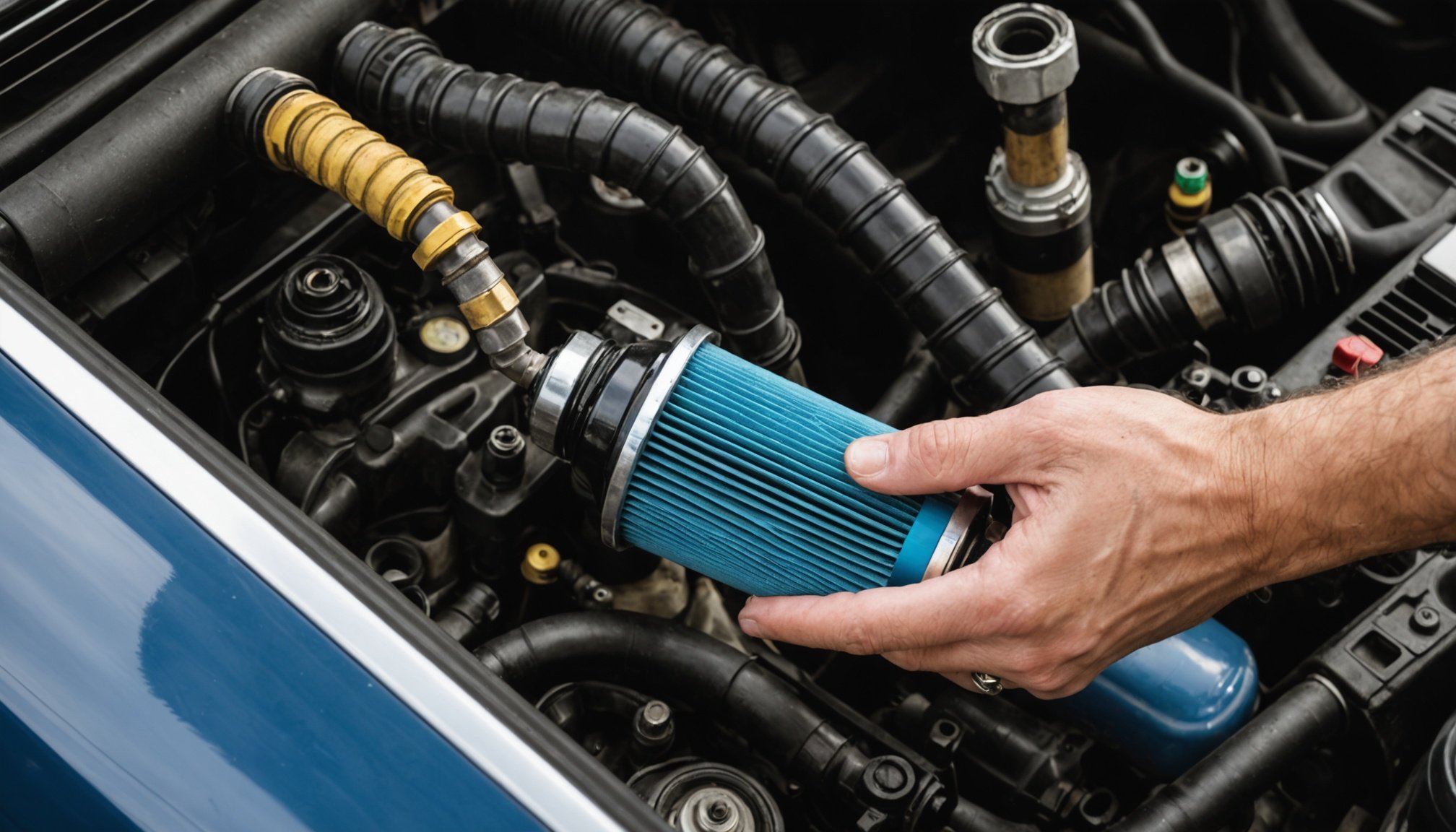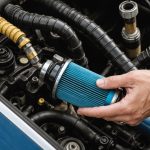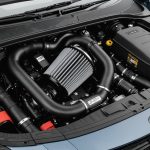Essential Safety Precautions for Changing Fuel Filter
Engaging in vehicle maintenance, particularly when changing a fuel filter, involves several critical safety tips to ensure your well-being.
Firstly, the importance of wearing personal protective equipment (PPE) cannot be overstated. Safety goggles and gloves protect against fuel splashes and vapors, minimizing the risk of irritation or injury. These safety tools are essential, as they act as your first line of defense against potential hazards.
In the same genre : Essential Safety Inspections for Agricultural Vehicles: What You Need to Know
In addition to PPE, ensuring proper ventilation in the work area is crucial when performing a fuel filter change. Fuel vapors are not only flammable but also hazardous to health if inhaled in confined spaces. By working in a well-ventilated area, you significantly reduce the risks posed by these vapors. Open windows or working outdoors are preferable options to achieve adequate airflow.
Understanding the risks associated with fuel vapors further emphasizes the need for certain precautions. Fuel vapors can ignite when exposed to open flames or sparks, making it essential to remove any ignition sources, such as lit cigarettes or open flames, from the vicinity. This precaution helps prevent accidental fires during the fuel filter change.
Also to discover : How to Effectively Assess Your Vehicle”s Electronic Stability Control: Top Testing Methods Revealed
By adhering to these safety tips, you ensure a safer and more effective vehicle maintenance experience.
Necessary Tools and Equipment
Embarking on a fuel filter change requires a precise array of tools for fuel filter change to ensure efficiency and prevent complications. The importance of using the correct car maintenance tools cannot be overstated, as this ensures accuracy and shields the vehicle from inadvertent damage. Here’s a look at what’s necessary:
- Socket Set and Wrench: Vital for loosening bolts without harming the filter assembly.
- Fuel Line Disconnect Tool: Specialized for detaching fuel lines safely.
- Screwdrivers: Both flathead and Phillips for miscellaneous adjustments and securing tasks.
- Container for Fuel Catchment: Essential to manage spills and keep your workspace tidy.
Adhering to safety protocols is equally crucial. Employing recommended safety equipment like gloves to shield your hands from fuel and eye protection to guard against splashes is important. Understanding the inherent risks of handling fuel adds layers of protection for both you and your vehicle.
Indeed, having the correct tools at your disposal is key to not only executing the fuel filter change meticulously but also safeguarding the car’s delicate components. By investing in quality equipment, one lays the groundwork for effective, seamless maintenance and extends the longevity of your vehicle’s performance.
Step-by-Step Guide to Changing the Fuel Filter
Embarking on a do-it-yourself fuel filter replacement can seem daunting, but breaking it down into manageable steps makes the process much more approachable. This guide will walk you through each stage to ensure a smooth and successful replacement.
Preparing the Vehicle for Maintenance
Before starting the fuel filter replacement, ensure your vehicle is parked on a level surface and the engine is completely cool. Disconnect the battery to eliminate any risk of electrical shock during the procedure. Have all necessary tools and replacement parts ready. This preparatory step is crucial for safety and efficiency.
Removing the Old Fuel Filter
Locate the existing fuel filter, typically along the fuel line. Consult your vehicle’s manual for precise positioning. Using a suitable wrench, carefully disconnect the filter from the fuel line. Be vigilant for excess fuel spillage; using a container to catch any leaking petrol can prevent mess. Ensure all connections are fully loosened before attempting to remove the filter.
Installing the New Fuel Filter
Position the new fuel filter, ensuring the arrow indicating fuel flow direction is correct. Connect each fuel line back into place, securing with the appropriate wrench. Tighten all connections precisely, avoiding overtightening which can lead to damage. Once installed, reconnect the vehicle battery. After installation, inspect all connections for any leaks while the engine runs. Proper installation without leaks ensures the fuel filter functions optimally.
Common Mistakes to Avoid
When undertaking a fuel filter change, it’s crucial to recognise common oversights that might lead to unsafe scenarios. Failing to adequately tighten connections or not ensuring seals are properly seated can result in fuel leaks, posing significant fire hazards. Always double-checking these components will mitigate such risks effectively.
Neglecting to prepare the workspace can also lead to dangerous conditions. Ensuring the area is well-ventilated is vital, as fuel fumes can accumulate and become a health hazard. Moreover, keeping a fire extinguisher nearby during the process is an essential safety precaution often overlooked.
Additionally, avoiding shortcuts is imperative in ensuring a safe and successful maintenance routine. Home mechanics might be tempted to skip steps like depressurising the fuel system, which can prevent fuel spray. This, while attempting to save time, can lead to fuel exposure and potential injury.
Other mistakes include not wearing appropriate protective gear, such as safety goggles and gloves, which safeguard against accidental spills or splashes. Using tools not designed for fuel system components can also result in damage, increasing the risk of leaks and delayed maintenance. Adhering to these safety tips ensures a more secure and efficient approach to fuel filter maintenance.
Troubleshooting Tips
When it comes to troubleshooting vehicle issues, recognizing the signs of fuel filter problems is crucial for maintaining vehicle health. A common indication of improper installation includes unusual noises like hissing or whistling from the engine. If your vehicle is jerking or hesitating during acceleration, these might point towards a misfitted or clogged fuel filter. Always ensure the correct alignment and secure fitting during installation to mitigate these issues.
Handling fuel leaks or pressurized lines requires careful attention. Fuel leaks often manifest as a strong petrol odour or visible fuel beneath the vehicle. In such cases, it’s imperative to check connections and clamps for tightness, and ensure the sealing surfaces are intact and clean. To safely work on pressurized lines, release the pressure from the system before disconnecting any hoses to prevent accidents.
It’s essential to know when to seek professional help. If troubleshooting steps fail to resolve the problem or if issues persist, consulting a professional is advisable. Mechanical problems that go unchecked can escalate and lead to costly repairs. Additionally, a professional mechanic can use diagnostic tools to precisely identify and correct underlying fuel system issues with greater accuracy. Thus, proactive troubleshooting paired with professional advice ensures optimal vehicle performance.
Visual Aids to Assist with the Process
Understanding complex tasks such as a fuel filter change can be challenging, especially for beginners. Utilising visual guides significantly enhances comprehension and accuracy in executing each step.
Diagrams for Fuel Filter Location
A critical aspect of changing a fuel filter is accurately locating it. Diagrams can provide a clear and concise depiction of the precise location and potential obstacles. By studying these visual devices, users can save time and avoid mistakes that might arise from incorrect interpretations of text-based instructions.
Videos Demonstrating the Change Process
Videos serve as dynamic visual guides illustrating the fuel filter change process. Watching step-by-step tutorials allows individuals to gain a better grasp of complex procedures and nuances that diagrams alone may not capture. This hands-on perspective aids in preparing for potential issues, thereby building confidence.
Checklists for Safety and Tools
Checklists are indispensable in ensuring that all steps of a fuel filter change are followed methodically. They play a huge role in maintaining safety standards by reminding users to utilise required tools appropriately. A structured checklist prevents omissions and confirms all tasks are completed. Using these visual aids, paired with a checklist, not only makes the process more intuitive but also safer and more efficient.











